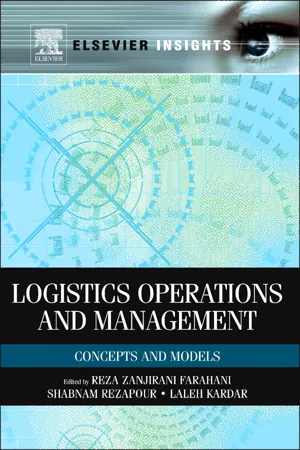Customer Service and ICT
Customer service and ICT (Information and Communication Technology) in business refer to the use of technology to enhance customer interactions and support. This includes tools like CRM systems, chatbots, and social media platforms to streamline communication and provide efficient and personalized service. ICT plays a crucial role in improving customer satisfaction, loyalty, and overall business performance.
5 Key excerpts on "Customer Service and ICT"
- eBook - ePub
- Haiyan Song(Author)
- 2012(Publication Date)
- Routledge(Publisher)
...Effective communication also improves customer satisfaction and enhances customer loyalty. For example, Cathay Pacific Airways, an effective user of CRM applications, draws on customer information to create a mutually beneficial relationship with its customers. In case of any flight delays, the airline’s Marco Polo Club members receive personalised text messages, thereby allowing them to plan their departure to the airport accordingly. From TSC members’ perspective, knowledge of customers, including their past behaviour and preferences, enables the customisation of communication to specific customer groups. Such customised communication can result in greater sales and profitability for tourism businesses. For instance, the online booking systems of these businesses can remember customers’ names, payment details, click sequences within the online booking website, and the products purchased. These data constitute useful information for travel agencies, tour operators, and accommodation providers in designing personalised products and services for customers who use their online booking systems. 8.4 Customer Service Management Customer Service Management Customer service in the SCM context describes a host of different but critically interrelated activities that provide customer utility or optimum levels of service. La Londe et al. (1988) describe customer service as the process of providing significant value-added benefits to the supply chain in a cost-effective way. Customer service management (CSM) is the system that manages these critical activities. Band (1991) defines CSM as a system in which customer needs, wants, and expectations are met or exceeded over the transaction cycle, thereby resulting in repurchase behaviour and loyalty. CSM has changed dramatically over the past thirty years...
- Linda L. Lowry(Author)
- 2016(Publication Date)
- SAGE Publications, Inc(Publisher)
...Customer Service in Service Businesses Customer Service in Service Businesses Steve Burns Steve Burns Burns, Steve Phil Higson Phil Higson Higson, Phil 334 337 Customer Service in Service Businesses Steve Burns Phil Higson Economic activity in developed nations has changed significantly in recent years, shifting from predominantly manufacturing-based enterprises to the service sector. The service sector includes areas such as government, telecommunications, health care and hospitals, banking and financial services, insurance services, management consulting, retail, leisure, entertainment, hospitality, and travel and tourism. The service sector now constitutes around two-thirds of GDP in the developed countries (in Europe it is even higher, at around 70%). This means the term customer service has increasing importance, especially for the travel and tourism industry. There is no agreed-on definition of the term customer service but a reasonable starting point might be that used by the United Kingdom’s Institute of Customer Service: “the sum total of what an organisation does to meet customer expectations and produce customer satisfaction” (ICS, 2015). This denotes a broad spectrum of processes and culture, and reflects the many facets of an organization’s relationship with its customers, especially a focus on helping or assisting its customers. The term is also used to indicate elements of customer satisfaction, often qualified by such adjectives as “good,” “bad,” “excellent,” “poor.” These are used to illustrate how customers themselves perceive levels of customer service provided by the organization. We Are All Customers Now The service revolution has changed who is perceived as a customer. In Britain, those borrowing books from libraries, students in universities, and hospital patients are all considered “customers.” Even having your rubbish collected makes you a customer, not simply someone putting out the trash...
- eBook - ePub
Logistics Operations and Management
Concepts and Models
- Reza Farahani, Shabnam Rezapour, Laleh Kardar, Reza Farahani, Shabnam Rezapour, Laleh Kardar(Authors)
- 2011(Publication Date)
- Elsevier(Publisher)
...Moreover, it means different things to the parties associated with any business transaction. This broadness of definition makes it difficult to achieve consensus. Alternative explanations of customer service will be discussed in this section. 11.1.1. Customer Service as an Organizational Activity Customer service can be considered to be a set of functions or activities taking place in the customer-service department of an organization with the aim of dealing with customers and satisfying their demands, including complaints, claims handling, and billing [2] and [3]. 11.1.2. Customer Service as a Process Another perspective considers service as a process that takes place between a seller, a buyer, and sometimes a third party that creates something of long- or short-term value for the parties. Thus, from this viewpoint, customer service can be defined as a process to effectively provide considerable added value for the whole supply chain [4]. 11.1.3. Customer Service from the Customer’s Side Moreover, customer service can be viewed from the customer’s side and be defined as providing customers with services that meets and, in some cases, exceeds their needs and expectations [5]. 11.1.4. How Experts Define Customer Service? To gain deeper insight into the customer-service concept, we review some definitions from logistics experts. Christopher [4] defines it as the “transaction of all those factors that affect the process of making products and services available to the buyer.” Johnson et al. [6] put forward quite another definition: “The collection of activities performed in filling orders and keeping customers happy, creating in the customer’s mind the perception of an organization that is easy to do business with.” 11.1.5. Defining Customer Service in Logistics Context Along with the foregoing definitions, another one is more common and applicable in the context of logistics...
- eBook - ePub
Competing through ICT Capability
Innovation in Image Communication
- M. Kodama(Author)
- 2012(Publication Date)
- Palgrave Macmillan(Publisher)
...Broadband-based video and web conferencing systems, and videophone applications aimed at consumers such as Skype or Apple’s FaceTime have emerged as a result of the remarkable technological advances of recent years. These ICT tools have not only brought more efficiency to business management, but have also revolutionized existing supply chains ahead of consumer adoption. ICT, with its huge leaps in computer-processing performance and communications technologies, has made a massive contribution toward more efficient business processes within companies, between companies and with their customers (e.g. Venkatraman, 1990, 1994, 1997; Hammer and Champy, 1993; Ross, Beath and Goodfue, 1996). For example, product development that focuses on customer needs is promoted by concurrent engineering and frontloading (e.g. Khurana and Rosenthal, 1998) and through project management (e.g. Kodama, 2007c) in the development and manufacturing process. Leading corporations all over the world are proactive in their use of a wide range of computer-aided design (CAD) and simulation applications integrated with ICT tools, which streamline and optimize everything across the supply chain from design, development, manufacturing techniques and assembly, through to distribution, marketing, sales and after-sales service (e.g. Kodama, 2007c). The growth of ICT has not only brought with it much greater efficiency in business processes and supply chain management for individual businesses operating in specific business areas, but has also contributed toward the creation of new types of businesses across a diverse range of business fields. In addition to all the applications for music, e-book, game and video distribution for instance, the advanced developments of tablet PCs and smartphone technologies found in devices such as iPhone, iPad and Android have greatly expanded the number of usage patterns and contents in wide-ranging areas like remote health care and e-learning...
- eBook - ePub
Customer Relationship Management (CRM) for Medium and Small Enterprises
How to Find the Right Solution for Effectively Connecting with Your Customers
- Antonio Specchia(Author)
- 2022(Publication Date)
- Productivity Press(Publisher)
...Outsourcing those workforces achieved the goal of cost reduction but, on the other hand, it left this mission-critical function led by a productivity driver to be managed from outside the business “owner’s” control, who therefore cannot exert the genuine intention of helping people. The opportunity comes from the possibility to deliver first-class interactions, best assistance, valuable support and help to everyone in need, something that definitely has a paramount impact on the value of the business. Technology definitely helps: customer support platforms are tools situated alongside the CRM and the marketing automation, and their role spans from the engagement stage to the after-sales support stage. And for this reason, they have a very special role in the business processes. They are not CRM even if their function can be integrated into a CRM platform, or they can be run independently by a more specialised tool that does not need to include the CRM. The CRM remains at the core of the architecture and is where data are stored; integrated service platforms use and combine that data, also feeding the CRM with conversational events. Technology today allows such an enhancement in service management that was pretty much impossible in the past. A company like Rapha Sportswear manages a traffic of 13000+ service tickets per month with 40 agents, while Lonely Planet hits only 5000+ tickets per month with 27 agents. The solution for a medium enterprise can be to implement a dedicated customer service tool, integrating it with a CRM that supports the sales process. Eventually, the organisation can also use a third element such as a conversational database to store data garnered from the chat, ticketing and all other conversation channels like text messaging, WhatsApp, Messenger and social media. The result will be a system that provides real-time information on any interaction between each client and anyone in the company at any time...




